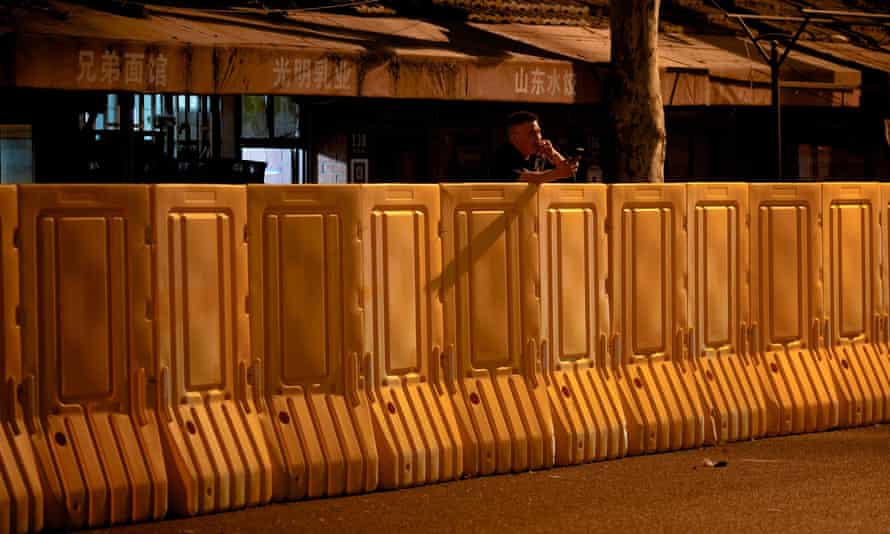Shanghai has begun its phased lockdown as an Omicron-fuelled Covid-19 wave spreads through mainland China’s most significant financial hub, resulting in the country seeing the highest caseloads since the early days of the pandemic.
The eastern side of the Huangpu River, which divides Shanghai, will be under lockdown between Monday and Friday, officials said, followed by a similar lockdown of its western side beginning on 1 April. Massing Covid testing across the city is also underway.
The metropolis of 25 million people has in recent days become the leading hotspot in a nationwide outbreak that began to gain pace in early March.
President Xi Jinping earlier this month urged his officials to “minimise the impact” of the virus on the country’s economy as the authorities reflected on the zero-Covid policy. On Monday, China’s stock market resumed lower, with its benchmark CSI 300 index falling as much as 2% in the morning trading hours.
In the case of Shanghai, the government ruled out a lockdown on Saturday, barely 24 hours before the final decision was announced, citing the potential damage it could cause to the economy.
However, a record 3,450 asymptomatic cases were reported in Shanghai on Sunday, accounting for nearly 70% of the nationwide total, along with 50 symptomatic cases, the city government said on Monday.
China’s National Health Commission on Monday reported 5,134 new asymptomatic cases for the previous day, and 1,219 local confirmed infections.
Although the case numbers remain relatively insignificant in a global context, they are China’s highest since the first weeks of the pandemic, which was first reported in the city of Wuhan in late 2019.
Millions of residents in affected areas across the country have been subjected to citywide lockdowns. Now, in the eastern part of Shanghai, residents are confined to their homes, too. Some said healthcare workers arrived to conduct tests as early as 7 am on Monday.
The city government said in a public notice on Sunday that the two-part lockdown was being implemented “to curb the spread of the epidemic, ensure the safety and health of the people” and root out cases of infection “as soon as possible”.
The city’s sprawling eastern half, known as Pudong, which includes the main international airport and financial district, would be locked down for testing beginning Monday morning and ending 1 April.
After that, the city’s western half, known as Puxi and featuring the historic Bund riverfront, would be locked down until 5 April, the government added.
Residents were told to stay indoors during the lockdowns, and all business employees and government personnel not involved in the supply of essential services were advised to work from home. Those involved with providing vital services such as gas, electricity, transport, sanitation and the supply of food would be exempt from the stay-at-home order.
Shanghai’s public security bureau said it was closing cross-river bridges and tunnels, and highway tollbooths concentrated in the city’s eastern districts until 1 April. Areas to the west of the Huangpu River will have similar restrictions imposed.
A member of the city’s pandemic taskforce had over the weekend vowed Shanghai would not shut down. The official said that a lockdown in Shanghai, which is the country’s major financial and trading hub, would “impact the entire national economy and the global economy”.
“If Shanghai, this city of ours, came to a complete halt, there would be many international cargo ships floating in the East China Sea,” said Wu Fan, a medical expert on the taskforce, during a daily virus press briefing held by the city government.

“It seems clear that the authorities have been trying to rely on targeted measures to the maximum extent possible, but clearly they now feel they cannot afford to wait any longer in Shanghai,” said Thomas Hale of Oxford University’s Blavatnik School of Government, who leads the Oxford Covid-19 Government Response Tracker.
“Overall, we’re now seeing more [Chinese cities] using restrictive measures than any other time since 2020.”
China’s government had previously kept the virus under control nationally through strict zero-tolerance measures including mass lockdowns of entire cities and provinces for even small numbers of cases.
But in recent weeks, authorities have watched nervously as a deadly Hong Kong Omicron surge prompted panic buying and claimed a high toll of unvaccinated elderly people.
The variant’s subsequent spread in mainland China has posed a dilemma for authorities wrestling with how forcefully to respond, with the zero-tolerance approach increasingly being questioned amid concerns over the economic impact and public “pandemic fatigue”, especially considering Omicron’s less severe symptoms.
Shanghai had sought to ease disruption with a targeted approach to the current outbreak marked by rolling 48-hour lockdowns of individual neighbourhoods combined with large-scale testing, but otherwise keeping the city running.
But the softer strategy has so far failed to dampen city case counts, and the localised lockdowns have provoked grumbling oline and a run on groceries in some districts.
Agence-France Presse and Reuters contributed to this report

